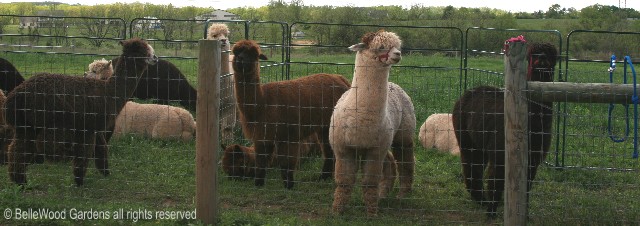
Sunday, 8 May 2011
Shearing Alpacas
"Why don't you come on Sunday," said Beatrice. "We're shearing the alpacas and it will be fun. Come
about 11:00 a.m., that's when we're starting." I knew the Tassots had an apiary but I didn't know about
the alpacas. I agreed that, weather permitting, I'd be there. It did, I went, and Bea was right - it was fun.

Now, just why do they have a herd of 15 alpacas? For their farmland assessment. Bees, it seems, do not
qualify. The regulations list all sorts of possibilities - firewood, hay, pumpkins, corn, livestock - but not bees.
The theory is, apparently, that who knows where the bees might fly off to, collecting sweet nectar for honey.
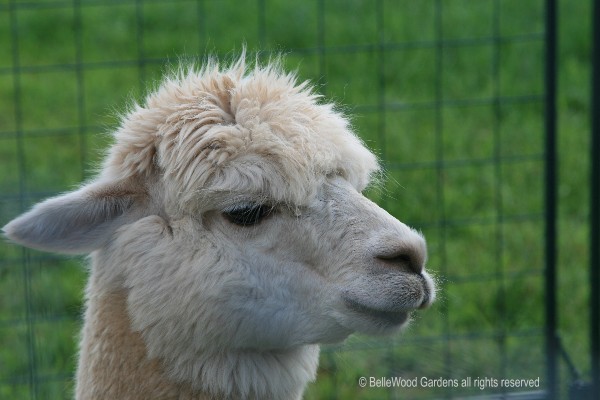
Cute is not adequate for tax purposes but fleece is. And alpacas have very high quality, valuable fleece.
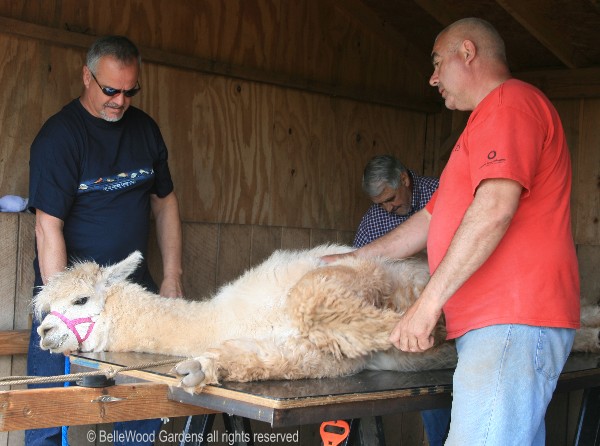
Sheep shearers are easy enough to find, here in Hunterdon County. Alpacas need a specialist. Accordingly
when the Tassot alpacas are sheared each Spring the work is done by Expert Alpaca Shearing from
London, Ohio. Steve and Jim, his shearing partner, spend 5 or 6 weeks travelling from Ohio, Delaware,
Pennsylvania, and New Jersey, shearing alpacas (and the occasional llama) day after day after day.

The alpaca is lifted and rolled onto a shearing table. One front leg and both hind legs are roped and
tied to a hook to restrain the animal. A helper steadies the animal's head to help hold him still. Steve
is explaining how - if necessary - the helper should use his arm to lean down for additional control.

First, each alpaca gets a pedicure. Alpacas have two toes with horny nails. The rest of the foot has a
leathery portion. In the Andes that sole would grip the rocks and the nails would wear down naturally.

Serious clippers (I think Steve calls them "shears"), well used, well sharpened, well maintained.
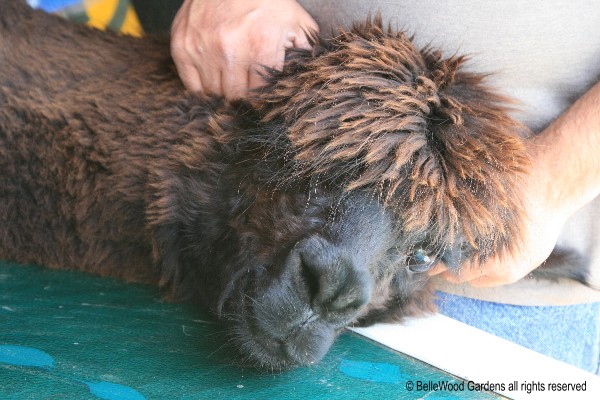
Chocolate is not really happy about all of this. At least he's cooperating. For now.
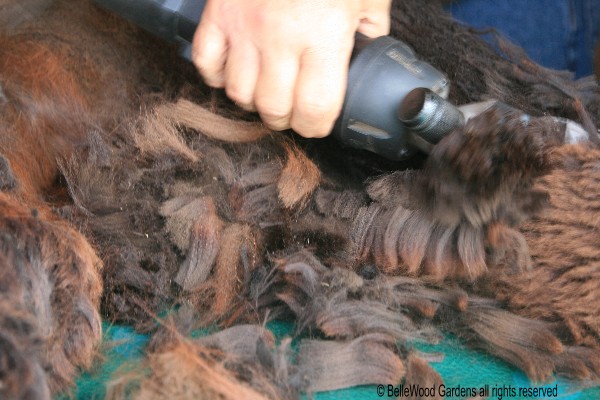
Fleece has different grades, or quality, even from the same animal. The blanket from over the back
and sides is the best quality. It is kept separate from the second quality trimmings from the neck, etc.
The very best fleece is the first shearing of a young animal. Most alpacas provide excellent fleece for
the next five years or so. After that, the fleece is coarser, and can be used to weave blankets, rugs, or
felted and then used to make garments such as a vest or coat, or to make decorative wall hangings.
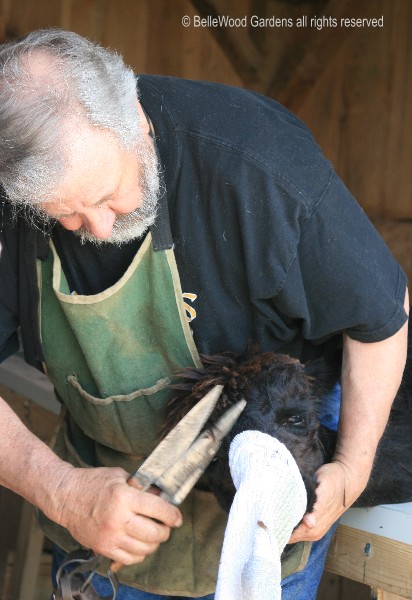
Why does Chocolate now have a sock on his face? Alpacas and llamas, when upset, have a really
nasty habit of spitting half-digested stinky green cud at whoever upsets them. Put a sock on it.
And this way Steve can give the finishing touch of hand shearing Chocolate's topknot, spitless.
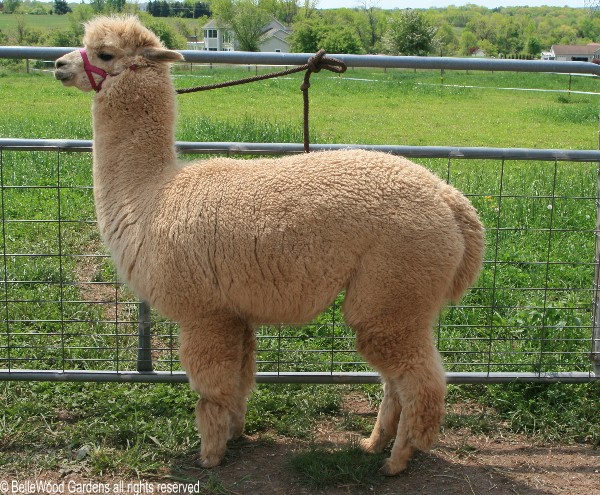
And what a difference! Here is Elliot, prior to shearing.
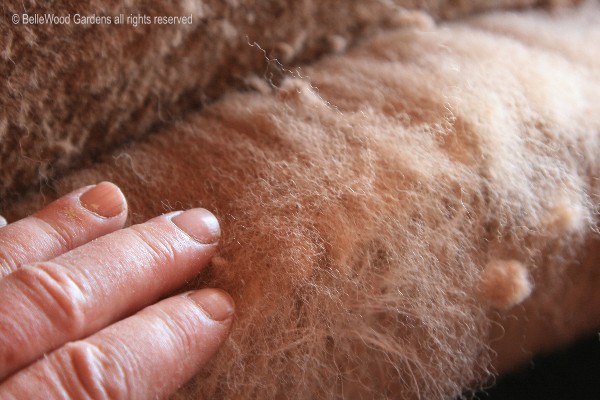
Jim stopped for a minute so I could come close and photograph Elliot's blanket fleece. Look at the crimp
and length of the fiber. It's just about as long as my hand is wide.
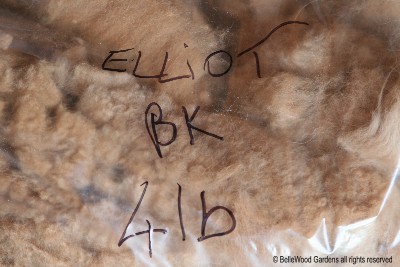
Fleece is separately bagged, labeled for the individual animal, quality
of fleece, and its weight. Elliot's blanket fleece weighs 4 pounds.
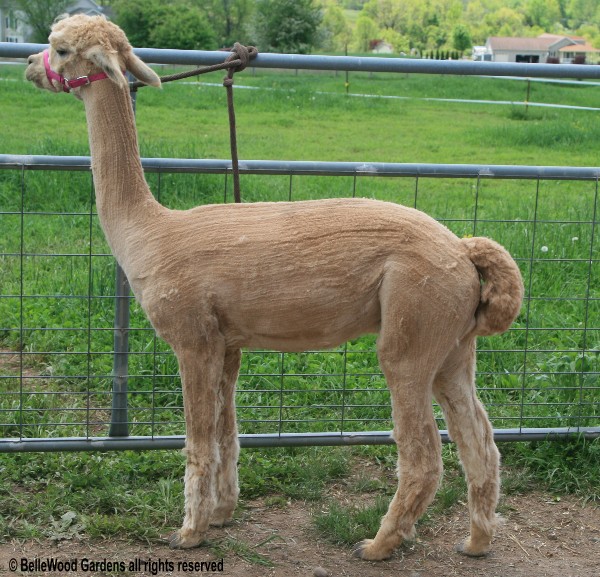
And here's Elliot after shearing. What a difference! His unshorn herd mates sniffed him over when he
was lead back to the field. Soon they'll all look the same. It will grow back, for shearing again next year.